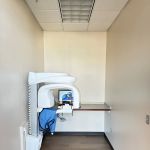How to Prevent Tooth Disease in Older Adults
- 1. The Importance of Oral Health in Older Adults
- 2. Common Tooth Diseases in Older Adults
- 3. Prevention Strategies for Oral Health
- 4. The Role of Diet in Preventing Tooth Disease
- 5. Real-Life Examples: Success Stories in Preventing Tooth Disease
- 6. Take Action: Protect Your Teeth at Any Age
1. The Importance of Oral Health in Older Adults
Oral health is often overlooked as we age, but maintaining a healthy mouth is crucial for overall health and quality of life, especially in older adults. Poor oral health can lead to serious problems such as tooth loss, gum disease, and even systemic health issues like heart disease or diabetes. Regular dental care is important for older adults to prevent these complications, as the risk of oral diseases increases with age.
2. Common Tooth Diseases in Older Adults
As people age, they become more susceptible to certain oral diseases. Some of the most common conditions in older adults include:
- Gum Disease (Periodontitis): Gum disease is a leading cause of tooth loss in older adults. The gums can recede, leading to infection and inflammation.
- Cavities (Tooth Decay): Older adults often experience cavities in teeth that have already been treated, as they may become more vulnerable due to dry mouth or poor oral hygiene.
- Dry Mouth (Xerostomia): A decrease in saliva production, often due to medications, can lead to dry mouth, increasing the risk of tooth decay and gum disease.
- Tooth Sensitivity: Aging teeth can become more sensitive to hot, cold, or sweet foods due to enamel wear and gum recession.
3. Prevention Strategies for Oral Health
Preventing tooth disease in older adults involves adopting a proactive approach to oral care. Here are some effective strategies:
- Brushing and Flossing Regularly: Brush at least twice a day using fluoride toothpaste and floss daily to remove plaque and prevent cavities and gum disease.
- Regular Dental Checkups: Visit the dentist at least once a year for professional cleanings, checkups, and early detection of potential problems.
- Fluoride Treatments: Fluoride helps strengthen tooth enamel, making it more resistant to decay. Your dentist may recommend fluoride treatments or mouthwashes to reduce the risk of cavities.
- Quit Smoking: Smoking is a major risk factor for gum disease and tooth loss, so quitting can significantly improve your oral health.
4. The Role of Diet in Preventing Tooth Disease
Your diet plays a vital role in preventing tooth disease. A balanced, nutritious diet supports strong teeth and gums. Foods that are high in calcium, vitamin D, and antioxidants help prevent tooth decay and gum disease. On the other hand, sugary, acidic, and processed foods can harm your teeth by feeding harmful bacteria and eroding enamel. Here are some diet tips for maintaining oral health:
- Consume Calcium-Rich Foods: Foods like dairy, leafy greens, and almonds are rich in calcium, which strengthens teeth and bones.
- Stay Hydrated: Drinking plenty of water helps keep your mouth moist and prevents dry mouth, which can lead to tooth decay.
- Avoid Sugary and Acidic Foods: Limit sugary snacks, soda, and acidic foods that can wear down enamel and contribute to tooth decay.
- Eat Fiber-Rich Vegetables: Vegetables like carrots and celery stimulate saliva production, which helps wash away food particles and bacteria.
5. Real-Life Examples: Success Stories in Preventing Tooth Disease
One real-life example is Mary, an older adult who had struggled with gum disease in her younger years. By adopting a healthier diet and committing to regular brushing and flossing, Mary was able to prevent further damage to her gums. She also visited her dentist regularly for checkups and fluoride treatments. After a few years, her gum health significantly improved, and she managed to keep her natural teeth well into her 70s.
Another success story involves John, who developed dry mouth as a result of medications for high blood pressure. After consulting with his dentist, he started using fluoride mouthwash and sipping water throughout the day to keep his mouth hydrated. These changes helped him avoid tooth decay and maintain a healthy smile despite the challenges of aging.
6. Take Action: Protect Your Teeth at Any Age
It’s never too late to take action to prevent tooth disease. Older adults can maintain healthy teeth and gums by following good oral hygiene practices, eating a balanced diet, staying hydrated, and visiting the dentist regularly. By investing in your oral health, you can enjoy a lifetime of strong, healthy teeth. For more information on maintaining oral health and to explore the best dental products, visit Dentistry Toothtruth.







 Arise Dental - Your Local Peoria Dentist4.0 (205 review)
Arise Dental - Your Local Peoria Dentist4.0 (205 review) Light Dental Studios of University Place4.0 (279 review)
Light Dental Studios of University Place4.0 (279 review) Dentists of South Pasadena4.0 (124 review)
Dentists of South Pasadena4.0 (124 review) Aurora Dental Care4.0 (153 review)
Aurora Dental Care4.0 (153 review) ClearChoice Dental Implant Center4.0 (383 review)
ClearChoice Dental Implant Center4.0 (383 review) Kansas City Dentures and Implants5.0 (15 review)
Kansas City Dentures and Implants5.0 (15 review) The Importance of Oral Health Education During Pregnancy for a Healthy Pregnancy
The Importance of Oral Health Education During Pregnancy for a Healthy Pregnancy Best Tips for Brushing Your Teeth Properly for Healthy Gums: Essential Techniques for Oral Health
Best Tips for Brushing Your Teeth Properly for Healthy Gums: Essential Techniques for Oral Health Why Skipping Dental Checkups Can Lead to Bigger Oral Health Problems
Why Skipping Dental Checkups Can Lead to Bigger Oral Health Problems Advantages of Porcelain Dental Restorations
Advantages of Porcelain Dental Restorations How Can Diabetes Cause Tooth and Gum Problems? Preventing and Managing Oral Health Issues
How Can Diabetes Cause Tooth and Gum Problems? Preventing and Managing Oral Health Issues Healthy Habits for Promoting Good Oral Health and Hygiene: Tips for a Healthy Smile
Healthy Habits for Promoting Good Oral Health and Hygiene: Tips for a Healthy Smile